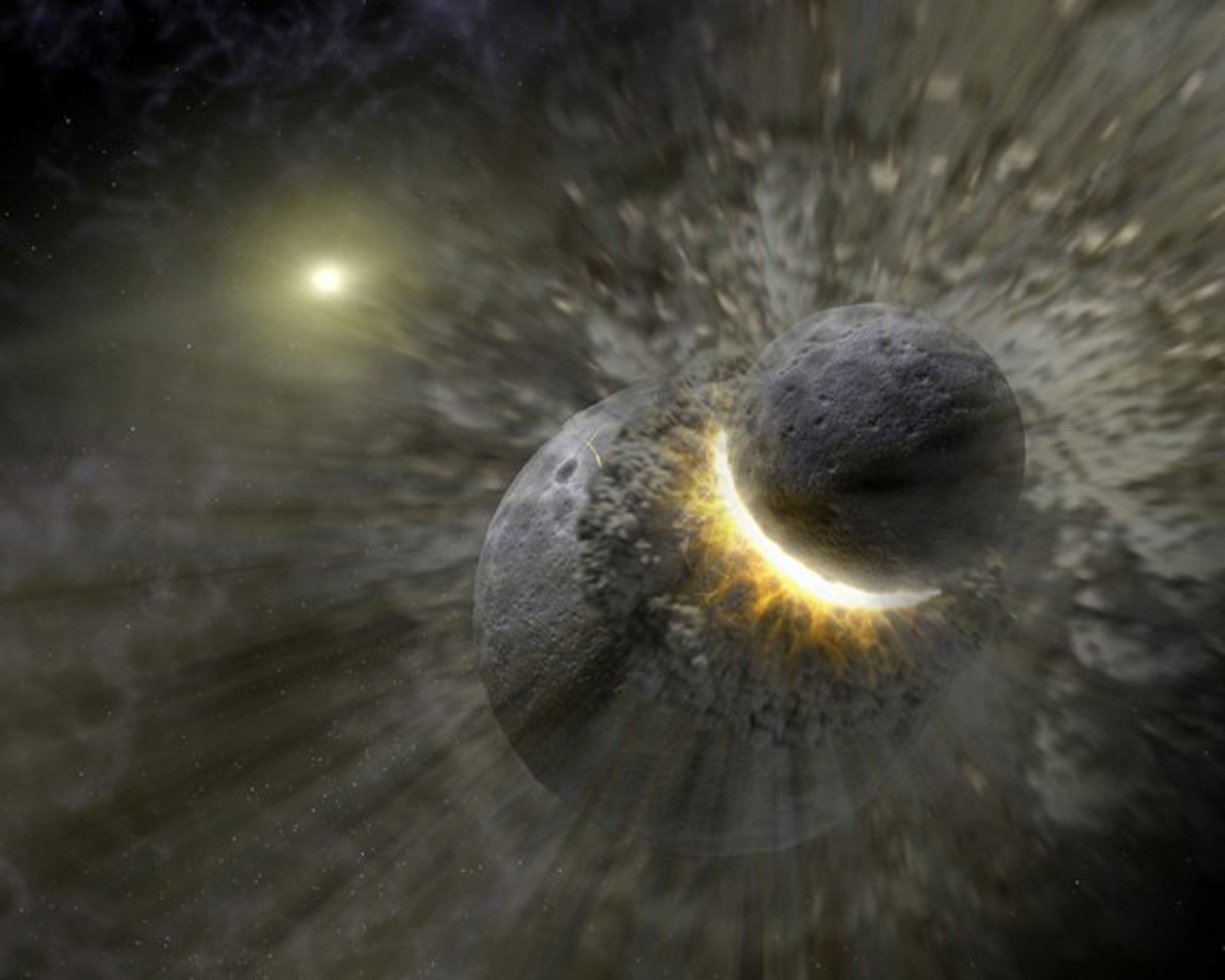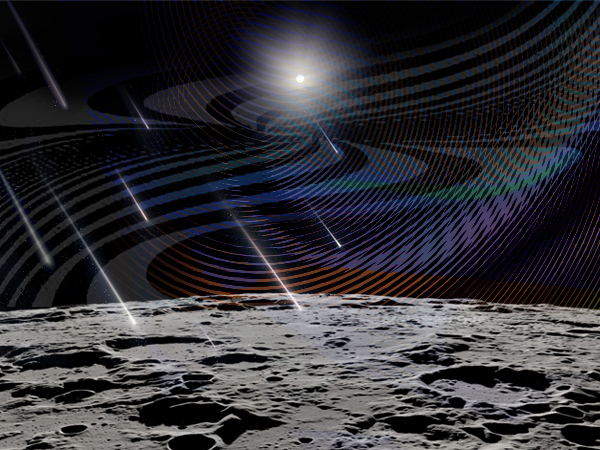Solar Wind on the Moon
As you read this sentence, the Sun is blasting a barrage of charged particles (electrons, protons, and other ions) out into the solar system. We call this ongoing stream of material the solar wind. On the Moon, solar wind is more or less an everyday affair. An invisible electric breeze bathes the sunlit lunar surface, growing calmer for a few Earth days each month as our planet’s magnetosphere provides a partial shield. Lunar scientists know the solar wind as a chemical factory, a landscape artist, and more.
Shelter from the Solar Wind
To understand why solar radiation is such a big deal on the lunar surface, let’s compare the Moon with its closest companion: Earth. Our planet has two layers of protection that the Moon lacks—an atmosphere and a global magnetic field.
What are global magnetic fields, and why do they matter?
All magnets are surrounded by invisible force fields. Earth is a planet-sized magnet with a gigantic magnetic force field to match. This global magnetic field helps to shield us from the harsh conditions of space. Without it, much more radiation would reach Earth’s surface.
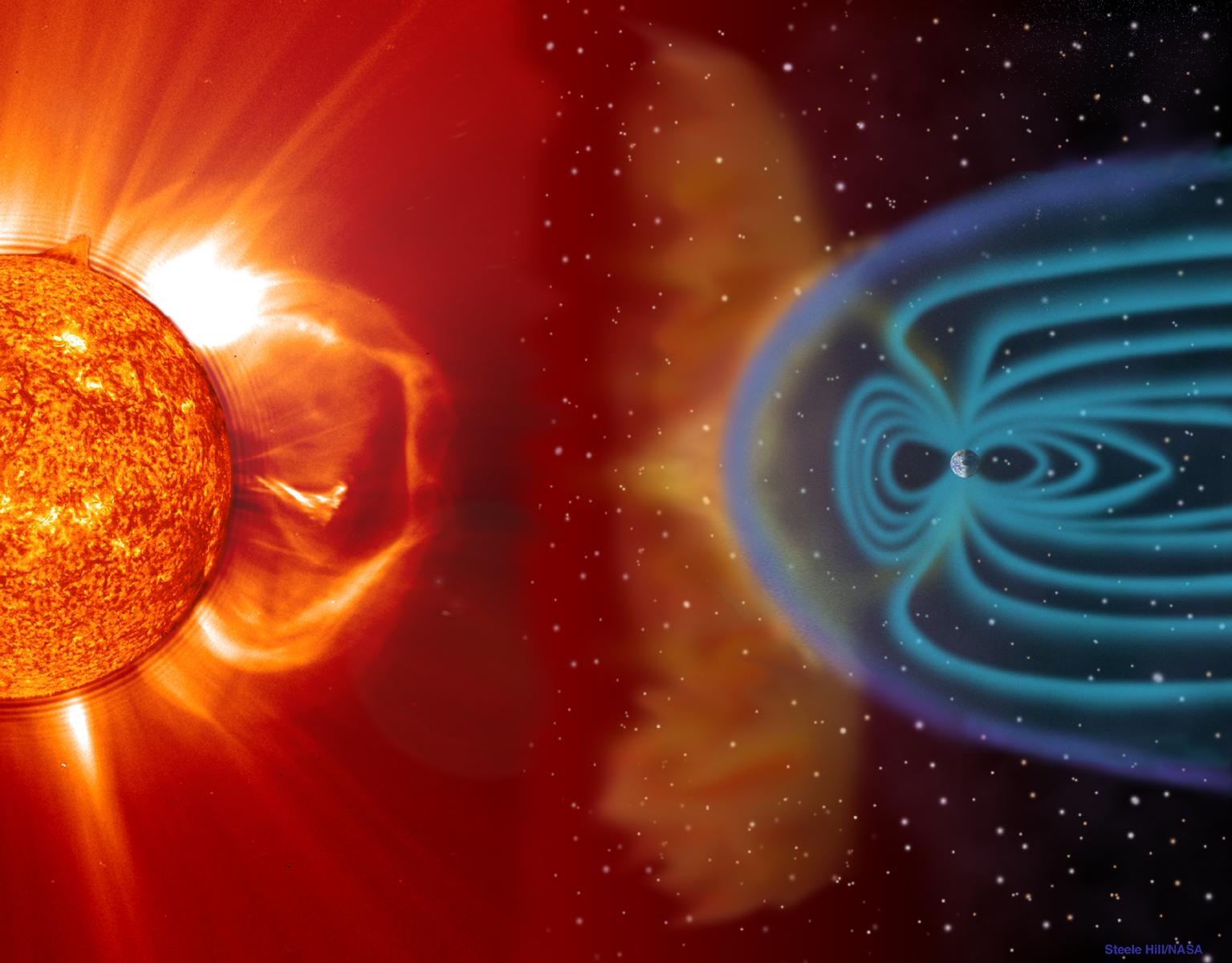
Does the Moon have a magnetic field?
The Moon is not a magnet, so it has no global magnetic field, although some areas on the Moon have localized magnetic fields. With no magnetosphere, and almost no atmosphere, most of the lunar surface is directly exposed to solar wind and other space radiation.
Mysterious Swirls and the Magnetic Moon
Small magnetic field bubbles shield parts of the lunar landscape from solar wind and ‘sunburn’.
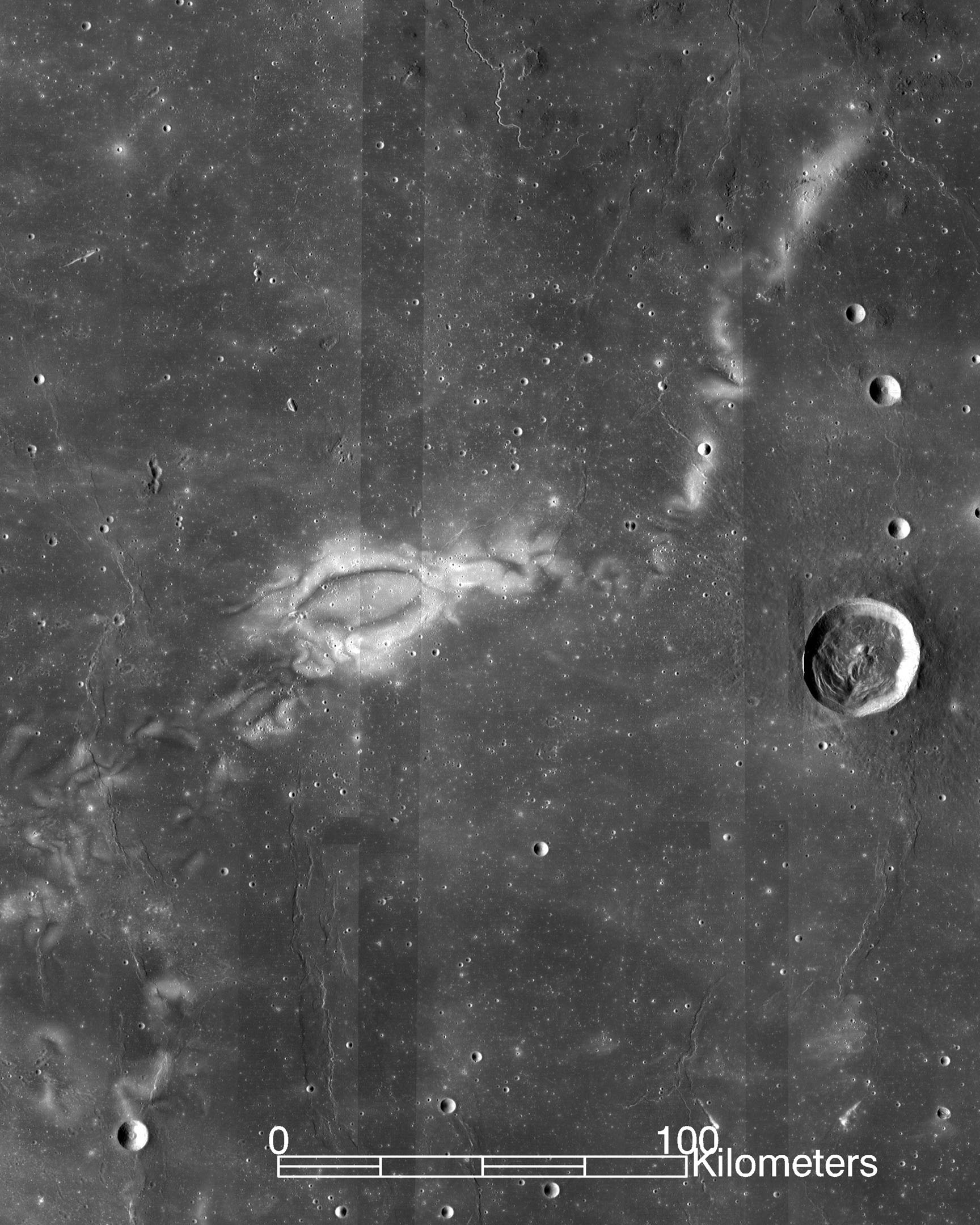
In areas that are magnetically protected, the ground stays relatively bright. Just outside of the shielded regions, radiation-induced chemical reactions darken the landscape. In other words, the magnetic field bubbles act as a sunscreen.
These striking patterns are called “lunar swirls”. We can think of lunar swirls as the Moon’s tan lines!
The Moon as a Chemical Factory
There’s water on the Moon, and some of its atoms may come directly from the Sun. Together, the Moon and the solar wind have everything it takes to make water molecules (two hydrogen atoms and one oxygen atom, or H2O). Oxygen atoms are bound in rocks and particles on the lunar surface. Incoming solar wind breaks some of these oxygen atoms’ chemical bonds, freeing them to form new connections. The solar wind also brings the other essential ingredient for water: hydrogen.
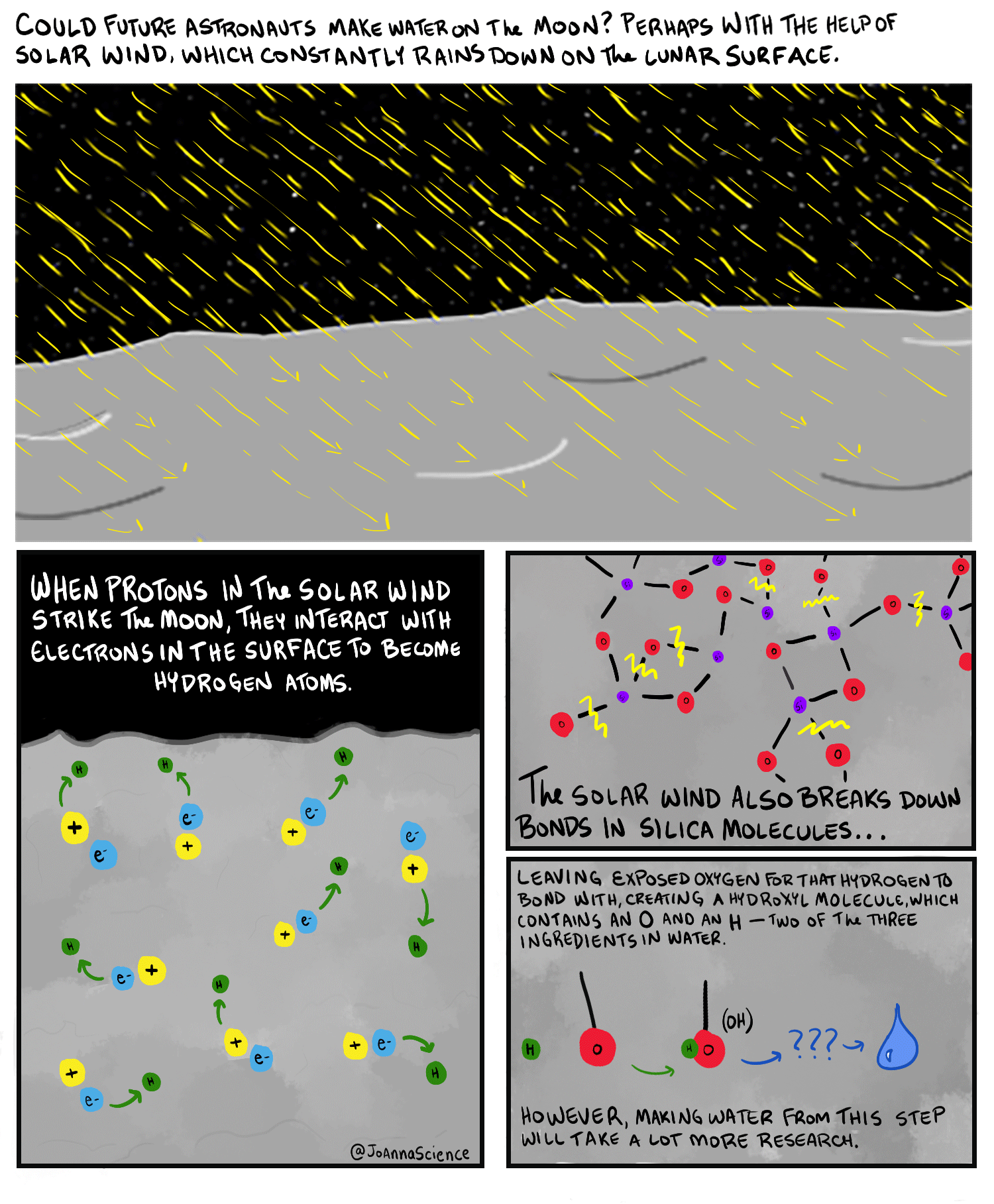
As solar wind floods the Moon, these ingredients and processes combine to produce pairs of oxygen and hydrogen atoms (also called hydroxyl, or OH, molecules). NASA scientists use simulations and spacecraft data to understand how lunar hydroxyl molecules form, where they end up, and if they could be useful to future astronauts in search of water.
This May Come as a Shock, But…
Incoming solar wind charges the lunar landscape with static electricity. Have you ever shuffled your feet against a carpeted floor and found that you’re able to deliver a tiny electric shock? That’s static electricity at work! Thanks to the solar wind and other radiation, astronauts and robots crunching across the Moon’s powdery surface build up static electricity, too. For these explorers and their equipment, a stray spark could cause serious problems.
But solar wind is not just a source of electricity—it can also be a way to discharge built-up volts. The Sun’s radiation acts as an electrical conductor (in other words, electricity can travel through it). Apollo astronauts relied on the solar wind and electrical currents released by solar ultraviolet radiation to carry excess static charge safely away. This is a natural way to discharge electricity from spacesuits and equipment before it becomes dangerous, like “grounding” (releasing an electric charge into the ground) on Earth.
NASA’s Scientific Visualization Studio
In the Moon’s deepest shadows, beyond the reaches of sunlight and solar wind, built-up static electricity does not have such an easy escape route. Offloading extra energy will require creative solutions. This is one of the challenges engineers and scientists are working to address as NASA prepares to explore craters near the Moon’s South Pole, where some parts of the lunar surface are shrouded in permanent darkness.
Writer: Caela Barry, NASA's Goddard Space Flight Center
Science Advisors: O.J. Tucker, Bill Farrell, NASA's Goddard Space Flight Center


